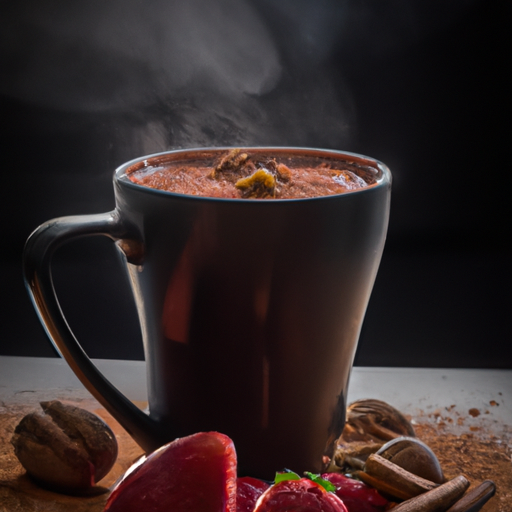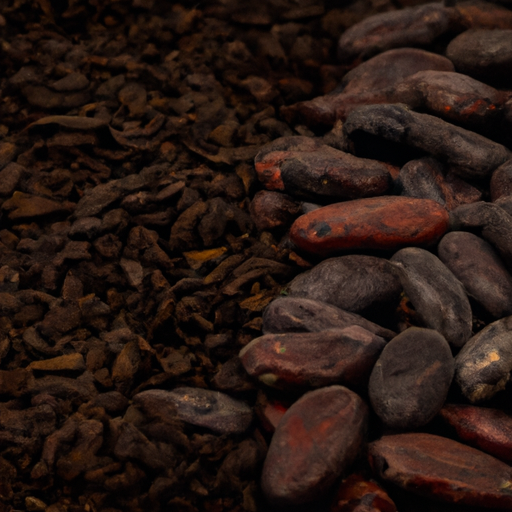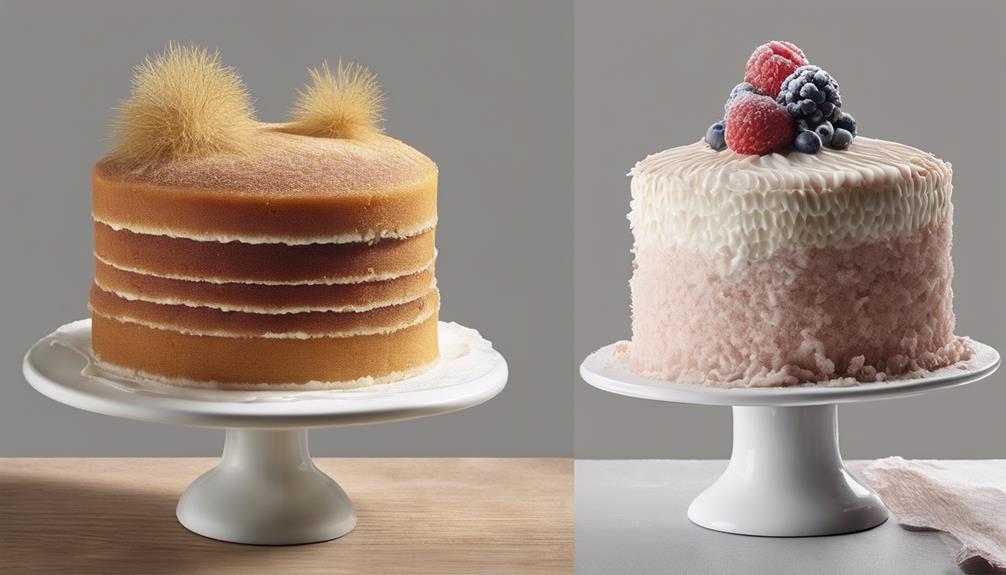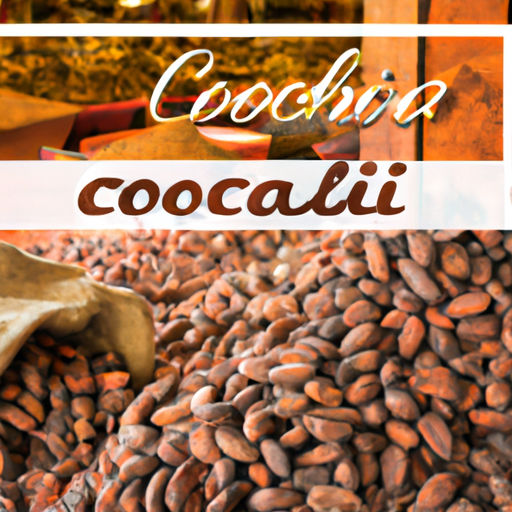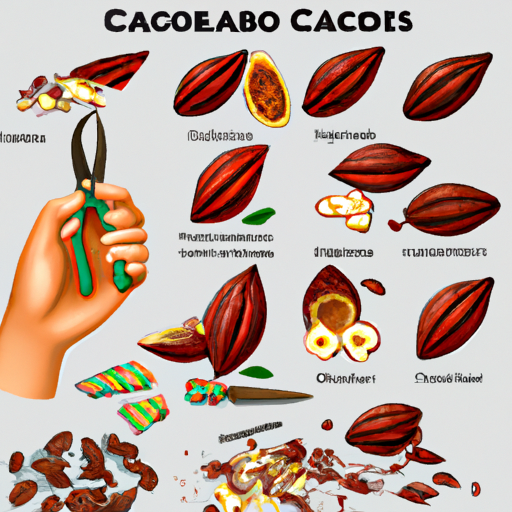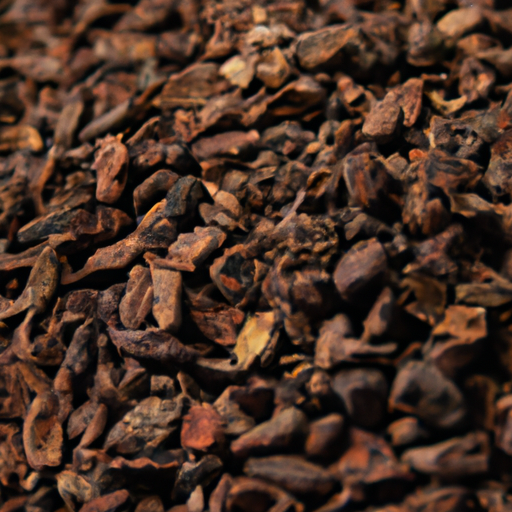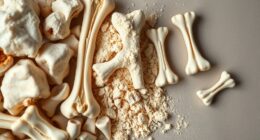Savoring the delicious taste of raw cacao powder not only delights the palate, but also benefits our health. This smooth, flexible ingredient has become popular in the health and wellness industry for good reason. Its nutritional value is remarkable, with a generous mix of antioxidants, minerals, and fiber.
But the benefits of raw cacao powder go beyond its nutritional content. It has been hailed for its heart health benefits, mood-boosting properties, cognitive function enhancement, and even its ability to support weight management and promote digestive health. Additionally, this superfood can lend a helping hand in maintaining healthy skin and providing a much-needed energy and stamina boost.
With so many reasons to embrace raw cacao powder, it’s time to delve into the delightful realm of this cocoa treasure and unlock its true potential for a healthier, happier you.
Key Takeaways
- Raw cacao powder enhances cognitive function, focus, and concentration.
- It provides sustained and long-lasting energy boost.
- It controls appetite and increases fat oxidation, supporting weight management.
- Raw cacao powder offers skin health benefits, promoting a youthful appearance and reducing inflammation.
Nutritional Profile of Raw Cacao Powder
Raw cacao powder is a powerhouse of nutrients that’ll make your taste buds dance with joy. It is packed with antioxidants, which help protect our cells from damage caused by harmful free radicals. Antioxidants are essential for maintaining overall health and preventing chronic diseases.
In fact, raw cacao powder has one of the highest antioxidant contents compared to other foods, such as blueberries and acai berries.
Additionally, this delicious powder is rich in minerals like magnesium, iron, and zinc, which are important for various bodily functions. Magnesium, for example, helps regulate blood pressure and supports a healthy heart.
Speaking of heart health, raw cacao powder has been linked to numerous benefits in this area. It can improve blood flow, lower blood pressure, and reduce the risk of heart disease.
With all these nutritional benefits, it’s no wonder that raw cacao powder is a superfood for both your taste buds and your health.
Heart Health Benefits
When it comes to heart health, raw cacao powder has some impressive benefits.
First, it improves blood flow and circulation, which is essential for a healthy heart.
Additionally, it has been shown to lower blood pressure, reducing the risk of heart disease.
Lastly, consuming raw cacao powder regularly can help reduce the risk of developing heart disease.
Improves Blood Flow and Circulation
One beneficial effect of consuming raw cacao powder is that it improves blood flow and circulation. This is particularly important for athletes and individuals looking to enhance their athletic performance. Raw cacao powder contains flavonoids, which have been shown to stimulate the production of nitric oxide in the body. Nitric oxide helps to relax and widen blood vessels, allowing for better blood flow and oxygen delivery to the muscles during exercise. Additionally, the improved circulation can also have positive effects on sexual function by increasing blood flow to the genital area. In fact, studies have shown that the flavonoids in cacao can improve sexual function and satisfaction. These benefits make raw cacao powder an excellent addition to a healthy diet. Moving on to the next topic, raw cacao powder also has the potential to lower blood pressure.
Lowers Blood Pressure
Consuming raw cacao powder can have a relaxing effect on your blood vessels, allowing them to widen and creating a smoother flow of blood throughout your body. This can lead to lower blood pressure, which is beneficial for cardiovascular health. Here are four ways in which raw cacao powder helps in reducing blood pressure:
-
Nitric oxide production: Raw cacao powder contains high levels of flavanols, which stimulate the production of nitric oxide. Nitric oxide helps in relaxing and dilating blood vessels, resulting in lower blood pressure.
-
Antioxidant properties: The antioxidants present in raw cacao powder help in reducing oxidative stress and inflammation, which are known risk factors for high blood pressure.
-
Magnesium content: Raw cacao powder is a good source of magnesium, a mineral that plays a crucial role in regulating blood pressure. Adequate magnesium intake is associated with lower blood pressure levels.
-
Theobromine content: Raw cacao powder contains theobromine, a compound that can help in widening blood vessels and improving blood flow, leading to lower blood pressure.
By reducing blood pressure, raw cacao powder can contribute to reducing the risk of heart disease.
Reduces Risk of Heart Disease
To lower your risk of heart disease, incorporating raw cacao into your diet can be a deliciously wise choice. Raw cacao powder is packed with nutrients and antioxidants that support heart health. It contains flavanols, which have been shown to improve blood flow and reduce inflammation. These flavanols help relax and widen blood vessels, leading to improved circulation and lower blood pressure.
In addition, the antioxidants found in raw cacao powder can protect against oxidative stress, a major contributor to heart disease. By including raw cacao in your diet, you can nourish your heart and promote overall cardiovascular well-being.
And the benefits don’t stop there! Raw cacao also boasts mood-boosting properties that can enhance your overall sense of well-being and happiness. So, let’s dive into the next section and explore its mood-boosting effects.
Mood-Boosting Properties
Boost your mood with raw cacao powder. It contains properties that can uplift your spirits. The mood-boosting properties found in raw cacao powder have been shown to have a positive impact on emotional well-being.
Studies have indicated that the consumption of raw cacao powder can stimulate the production of endorphins and serotonin. These chemicals in the brain are associated with feelings of happiness and joy.
Additionally, raw cacao powder contains flavonoids, which are antioxidants. They have been linked to improved mood and reduced symptoms of depression.
So, incorporating raw cacao powder into your diet may help improve your overall mood and emotional state.
Transitioning into the next section about cognitive function enhancement, raw cacao powder also offers benefits for your brain health.
Cognitive Function Enhancement
Raw cacao powder offers several benefits for enhancing cognitive function. Firstly, it has been shown to boost brain function and memory. Studies indicate that the flavanols in raw cacao improve blood flow to the brain, resulting in enhanced cognitive performance.
In addition, raw cacao powder improves focus and concentration. The natural stimulants found in cacao, including caffeine and theobromine, can heighten alertness and enhance mental clarity.
Lastly, raw cacao powder protects against age-related cognitive decline. The antioxidants present in cacao help reduce inflammation and oxidative stress, both of which are known to contribute to cognitive decline.
Overall, incorporating raw cacao powder into your diet can provide various cognitive benefits, including improved brain function, enhanced focus and concentration, and protection against age-related cognitive decline.
Boosts Brain Function and Memory
Indulging in raw cacao powder is like giving your brain a turbocharged upgrade. It skyrocket your cognitive abilities and transforms your memory into a supercomputer. Research has shown that cacao contains powerful compounds, such as flavanols and antioxidants, that have a positive impact on cognitive function. These compounds increase blood flow to the brain, promoting the growth of new neurons and improving memory retention.
Additionally, cacao stimulates the release of endorphins and serotonin, which enhance mood and reduce stress, further supporting brain health. Not only does raw cacao powder boost cognitive function, but it also enhances memory by improving the brain’s ability to encode and retrieve information.
By incorporating raw cacao into your diet, you can unlock the full potential of your brain.
Transitioning into the next section, cacao also improves focus and concentration, allowing you to excel in tasks requiring mental clarity.
Improves Focus and Concentration
By incorporating this superfood into your daily routine, you’ll notice a remarkable improvement in your ability to stay focused and concentrate on tasks at hand. Raw cacao powder contains powerful antioxidants that enhance mental clarity and boost productivity. Here are three ways it achieves this:
-
Increased blood flow: The flavanols in cacao powder stimulate blood vessel dilation, leading to improved blood flow to the brain. This increase in circulation delivers essential nutrients and oxygen, enhancing cognitive function.
-
Neurotransmitter support: Cacao powder contains phenylethylamine, a compound that promotes the release of endorphins and dopamine, neurotransmitters associated with improved mood and focus.
-
Reduced stress: The natural compounds found in cacao can help reduce stress levels, allowing for better concentration and focus.
By improving focus and concentration, raw cacao powder sets the stage for the subsequent section about how it protects against age-related cognitive decline.
Protects Against Age-Related Cognitive Decline
Boost your brain power and keep your mind sharp as you age with the protective benefits of this superfood. Raw cacao powder has been shown to be effective in preventing age-related cognitive decline and improving cognitive health.
Studies have found that the flavonoids and antioxidants present in raw cacao powder can help protect the brain from oxidative stress and inflammation, which are known to contribute to cognitive decline. Additionally, the high levels of magnesium and other nutrients in raw cacao powder support healthy brain function and enhance memory and learning abilities.
Incorporating raw cacao powder into your diet can be a delicious way to support your brain health and maintain cognitive function as you get older. With its numerous benefits, it’s no wonder that raw cacao powder is considered a superfood for the mind.
Transitioning into the next section, let’s explore how this superfood can also provide an energy and stamina boost.
Energy and Stamina Boost
Raw cacao powder is a natural source of caffeine, providing a much-needed energy boost. Unlike other sources of caffeine, such as coffee or energy drinks, raw cacao powder offers a more sustained and long-lasting energy.
Additionally, consuming raw cacao powder has been shown to enhance physical performance, making it a great choice for athletes or those looking to increase their stamina during workouts.
Natural Source of Caffeine
Feeling a little sluggish? Indulge in some of that rich, velvety cacao powder to give yourself a natural caffeine kick.
Raw cacao powder is a great source of natural energy, making it an excellent alternative to coffee. It contains a small amount of caffeine, which can provide a gentle yet effective boost to your energy levels without the jitters or crash often associated with coffee.
Cacao powder also contains theobromine, a compound that acts as a mild stimulant, further contributing to its energy-enhancing properties.
This combination of caffeine and theobromine in cacao powder provides long-lasting energy that can help you power through your day.
So, if you’re looking for a natural and sustainable way to increase your energy and stamina, raw cacao powder is a great choice.
Provides Long-Lasting Energy
Indulge in some velvety cacao and experience an energy boost that will keep you powered up throughout the day, without any unwanted crashes or jitters.
Raw cacao powder is a natural source of long-lasting energy, making it an excellent choice for those seeking sustained vitality. It contains an array of nutrients, including magnesium and iron, which are essential for maintaining energy levels and supporting overall health.
Additionally, cacao powder is rich in flavonoids, powerful antioxidants that can improve blood flow and enhance long term endurance. With its combination of nutrients and antioxidants, raw cacao powder provides a steady stream of energy that can help you stay focused and productive.
As we transition into the subsequent section about how cacao enhances physical performance, it’s important to note that this natural energy source can also support your athletic endeavors.
Enhances Physical Performance
After providing long-lasting energy, raw cacao powder also enhances physical performance. It is a well-known fact that exercise benefits our overall health, but did you know that consuming raw cacao powder can actually improve your exercise performance? Raw cacao powder is rich in flavanols, which have been shown to increase blood flow and oxygen delivery to the muscles, resulting in improved endurance and performance during physical activity. Additionally, the high magnesium content in cacao powder helps to relax muscles and reduce cramping, allowing for better flexibility and movement. To illustrate the benefits of raw cacao powder for physical performance, consider the table below, which highlights the key nutrients found in cacao powder and their corresponding effects on exercise performance. With these exercise benefits in mind, it’s clear that incorporating raw cacao powder into your routine can have a positive impact on your physical performance and overall fitness. Moving forward, let’s explore how raw cacao powder can also provide support for weight management.
Weight Management Support
Including raw cacao powder in your diet can assist with managing your weight more effectively. Raw cacao powder is a great tool for weight loss because it contains compounds that can help control your appetite.
The high fiber content in cacao powder can make you feel fuller for longer, reducing the temptation to overeat. Additionally, cacao powder is low in calories and fat, making it a healthier alternative to other sweet treats.
Studies have shown that the flavonoids in cacao powder can also increase fat oxidation, helping your body burn more calories. By incorporating raw cacao powder into your diet, you can support your weight management goals and enjoy the delicious taste of chocolate.
Moving on to the next section, let’s explore the amazing skin health benefits of raw cacao powder.
Skin Health Benefits
Enhance your skin’s radiance with the magical touch of the dark delight. Raw cacao powder offers numerous skin health benefits due to its antioxidant effects and anti-inflammatory benefits.
Antioxidants help protect the skin against free radicals, which can cause premature aging and damage. By consuming cacao powder, you can help reduce oxidative stress and promote a more youthful appearance.
Additionally, cacao powder contains flavanols, which have been shown to improve blood flow to the skin and increase hydration. This can result in improved skin texture and a natural glow.
Furthermore, the anti-inflammatory properties of cacao powder may help reduce redness and inflammation associated with skin conditions such as acne and eczema. So, by incorporating raw cacao powder into your diet, you can nourish your skin from within.
Now, let’s explore how it promotes digestive health.
Digestive Health Promotion
Boost your digestive health and experience the wonders of incorporating raw cacao powder into your daily routine.
Raw cacao powder is not only a delicious addition to your diet but also provides numerous benefits for your digestive system. The gut microbiome, which consists of trillions of microorganisms, plays a crucial role in maintaining digestive health.
Raw cacao powder contains fiber that acts as a prebiotic, nourishing the beneficial bacteria in your gut and promoting a healthy gut microbiome. Additionally, the antioxidants found in raw cacao powder can help reduce inflammation in the digestive tract and support overall digestive function.
By including raw cacao powder in your diet, you can give your digestive system the support it needs to function optimally.
Transitioning into the subsequent section, discover the various ways you can incorporate raw cacao powder into your daily meals and snacks.
Incorporating Raw Cacao Powder into Your Diet
Indulging in the rich, velvety taste of this magical ingredient will transport your taste buds to a world of culinary delight. Raw cacao powder is not only delicious, but it also offers numerous health benefits. Incorporating it into your diet is a great way to boost your overall well-being. There are countless raw cacao recipes available that allow you to enjoy this superfood in various forms, from smoothies and desserts to energy bars and granola. However, it is important to note that raw cacao powder may have potential side effects if consumed in excess. These include digestive issues, increased heart rate, and migraines. It is always best to consume raw cacao powder in moderation and listen to your body’s response.
Frequently Asked Questions
Can raw cacao powder be used as a substitute for regular cocoa powder in baking recipes?
Yes, raw cacao powder can be used as a substitute for regular cocoa powder in baking recipes. It offers the same rich chocolate flavor and nutritional benefits, such as antioxidants and minerals.
Are there any potential side effects or risks associated with consuming raw cacao powder?
While raw cacao powder has numerous health benefits, it’s important to note potential side effects. Some individuals may have allergies to cacao, and it’s crucial to stick to the recommended dosage to avoid any risks.
How does raw cacao powder compare to dark chocolate in terms of health benefits?
Raw cacao powder is better for heart health compared to dark chocolate because it contains higher levels of antioxidants. These antioxidants help reduce inflammation and protect against heart disease.
Is it safe for children to consume raw cacao powder?
Yes, it is generally safe for children to consume raw cacao powder in moderation. However, parents should be aware of safety concerns such as the caffeine content and potential allergic reactions. Raw cacao powder also provides nutritional value, including antioxidants and minerals.
Can raw cacao powder help with managing symptoms of PMS or menstrual cramps?
Raw cacao powder may help manage symptoms of PMS or menstrual cramps. It is believed to be effective due to its high magnesium content and ability to increase serotonin levels. Recommended dosage is around 1-2 tablespoons per day.
What are the Health Benefits of Using Raw Cacao Powder?
Raw cacao contains flavonoids, powerful antioxidants that can lower the risk of heart disease and improve blood flow. The benefits of raw cacao also include boosting brain function, improving mood, and reducing inflammation. Additionally, it can help lower the risk of certain types of cancer.
Conclusion
In conclusion, raw cacao powder is a powerhouse of nutrients that offers numerous health benefits.
Its high antioxidant content promotes heart health, while its mood-boosting properties enhance our emotional well-being.
Additionally, its cognitive function enhancement and energy-boosting effects make it a great choice for mental clarity and stamina.
Furthermore, raw cacao powder supports weight management and promotes healthy skin and digestion.
So why not incorporate this delicious and nutritious ingredient into your diet and indulge in its many advantages? After all, isn’t it time we treated ourselves to something truly beneficial?

